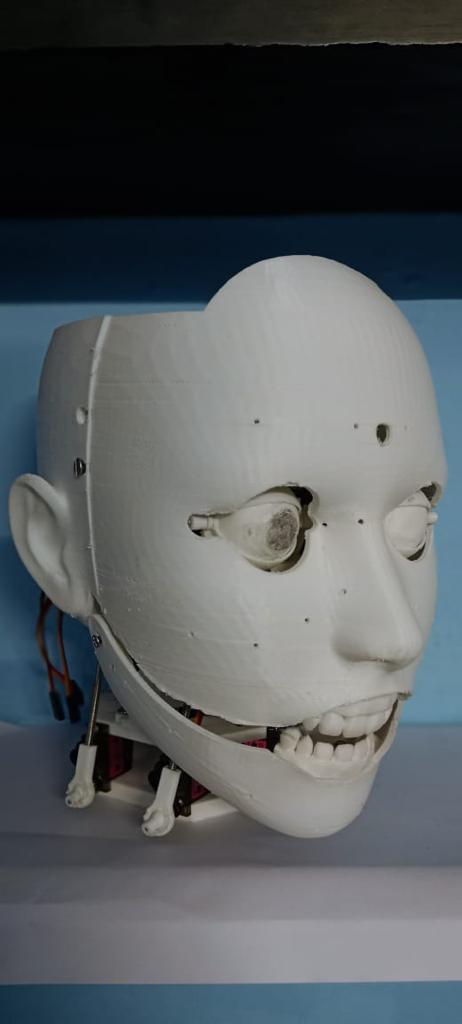Problem Statement & Solution
One of the challenges in robotics is creating lifelike interactions. A humanoid robot with realistic facial expressions can significantly improve user interaction, especially in applications where emotional connection is vital.
This project involved the design and development of a lifelike robotic head with the ability to perform realistic facial expressions. The head was controlled using 12 servo motors, each responsible for different facial features such as eyes, eyebrows, and mouth. The project aimed to enhance human-robot interaction by simulating emotions.
Key Features
- Lifelike facial expressions: Controlled by 12 servo motors for a wide range of emotions.
- 3D printed custom components: Over 300 components designed and printed to make the robot head lifelike.
- Speech synthesis and recognition: Google Text-to-Speech API used to enable natural conversation with users.
- High engagement rate: Achieved an 85% engagement rate in user tests with the robot's interaction.
Benefits
- Improves emotional connection between humans and robots.
- Provides a realistic user interaction for educational and customer service robots.
- Increases engagement with robots by creating a more empathetic experience.
Skills
- Arduino Programming
- Python Programming
- 3D Printing and Component Design
- Speech Recognition and Synthesis (Google Text-to-Speech API)
- Servo Motor Control and Robotics
- Circuit Design (Eagle)
Media

Comments